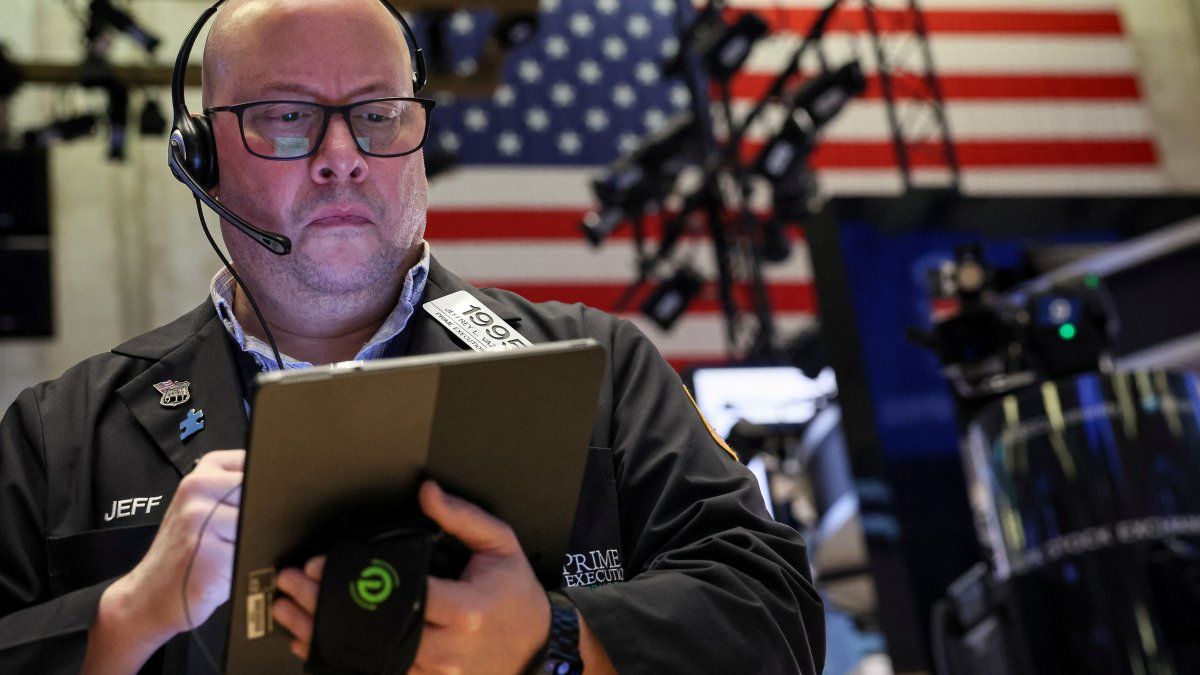The US stock market, measured by the S&P 500 index, registered new intraday and closing all-time highs on different days over the past week. But last Friday, when the market retreated from an all-time intraday high, some felt that I had already hit the ceiling. However, this week the S&P 500 hit a new all-time high again (today at 5,120 points) after investors decided that US consumer prices weren’t that bad.
While market fundamentals still appear to be in good shape, technical analysts note some weakness. They explain that the S&P 500 has support levels at 5,050 – lows at the end of February and beginning of March – then at 4,983 and then at 4,920 pointsand while there are others below they warn that if the index falls below 4,800, it would certainly be a significant bearish signal.
Furthermore, the new increases in European stock markets are another example of the underlying strength of global equities. But, a strength that It is already starting to make some managers dizzy who have a nervous finger on the sell key. Therefore, the million dollar question today is When will this stock market boom end?
Wall Street: when could this bullish festival end?
Analyst Brett Arends attempted to answer the question on MarketWacht. Says Arends: Financial experts tell anyone who will listen that the stock market is efficient and there is nothing better than it. Business school professors tell their students. Financial advisors are telling their clients this. The gurus are telling it to the Nobel Prize committee, which over the years has generously rewarded many apostles of this so-called efficient markets hypothesis. The only problem? Someone forgot to tell the stock market. Again.
He explains that it is a surprising but undeniable fact that, once again, Wall Street is demonstrating that it seems that All the money is made during the winter months, which begin around Halloween and traditionally end in early May. Which makes no logical sense and defies every principle of the efficient market hypothesis, so it shouldn’t happen, but it does.
Arends believes that the current stock market boom It started last October 30, when, after months of sluggishness and weeks of declines, the S&P 500 suddenly jumped more than 1% and has since risen a whopping 25%.
Wall Street: what happened during the previous six months?
From the last day of April to the last day of October 2023, the S&P 500 went from 4,169 to 4,194, a gain of 0.5%, and all these advances occurred on the last day, October 31.
It was a similar story a year ago: The harsh 2022 market crash ended just two weeks before Halloween, on October 14. From October 31, 2022 to the end of April 2023, the S&P 500 rose 7.7%. Then it stalled until next Halloween.
Arends comments that this is not simply a coincidence or a few anecdotes. Naturally, there are exceptions, such as the pandemic years of 2020 and 2021, but finance professors Cherry Zhang and Ben Jacobsen They analyzed all the historical data available on all the stock markets in the world, dating back in some cases to the 17th century.
“Our data is made up of the 114 stock markets with stock market indices of the world for which there are price indices and in total we have almost 63,000 monthly returns. The sample begins with the UK stock market in 1693 and ends with the addition of the Rwanda stock market, which begins in 2013,” they explain.
His conclusion: the Halloween effect is real and omnipresent. Average stock market returns during the winter months have been much higher than those during the summer months.
The authors of “The Halloween Indicator, Sell in May and Go Away”: Everywhere and All the Time” point out that the effect seems remarkably robust, cwith yields on average 4% higher during the November-April period than during May-October. Furthermore, in markets where they also had data on short-term interest rates, they found that, on average, there was not much, if anything, paid for taking risk in the stock market during the summer months.
“In none of the 65 countries for which we have total returns and short-term interest rates available – with the exception of Mauritius – can we reject a May selling effect based on our new test. Summer risk premiums not only They are not significantly positive, but in most cases they are not even marginally positive. In 45 countries, excess returns during the summer have been negative, and in 7 significantly so. On average, over the summer investors earned 1.1% less than they would have earned simply by holding cash. “Only in the winter months do we find evidence of a positive risk-return relationship.”
Arends acknowledges that no one knows why this should be the case, but there is a strong theory that Investors are affected by the shortening of days in the northern hemisphere after June 21. This makes them unconsciously more pessimistic and cautious in the face of autumn, which drives down stock prices. Why this should trigger a spike in late October, two months before the winter solstice, is anyone’s guess. Why this should also cause share prices to fall in the southern hemisphere is another challenge, although one could plausibly argue that markets in places like Johannesburg and Sydney have generally danced to a global stock market tune orchestrated in New York, Tokyo and major European countries. Who knows?
Other ideas include the past role of the harvest calendar, which involved calls for cash in the farm states in September and October and far, far away memories of the Wall Street crash of 1929, which began in October.
But it raises the question of how long the current surge can last without at least pausing for breath. Markets rarely rise or fall in a straight line. And there are many signs of ominous complacency or euphoria, such as new records for Bitcoin and Nvidia and general indifference to inflation. Expecting the rebound to lose steam over the next seven weeks, before a long lull in the spring and summer, may not make logical sense but would fit the schedule, Arends says.
“My own assumption is that this sell-in-May effect, or Halloween effect, will reverse dramatically the year I finally give in and follow through. The year I dump my stocks on the last day of April, you can expect a summer boom forever. Meanwhile, Anyone worried about how high this market will rise or when the boom will end now has a date to put on their calendar. It’s no worse than other people’s assumptions, although that’s another thing they won’t tell you.”
Source: Ambito
I am a 24-year-old writer and journalist who has been working in the news industry for the past two years. I write primarily about market news, so if you’re looking for insights into what’s going on in the stock market or economic indicators, you’ve come to the right place. I also dabble in writing articles on lifestyle trends and pop culture news.



